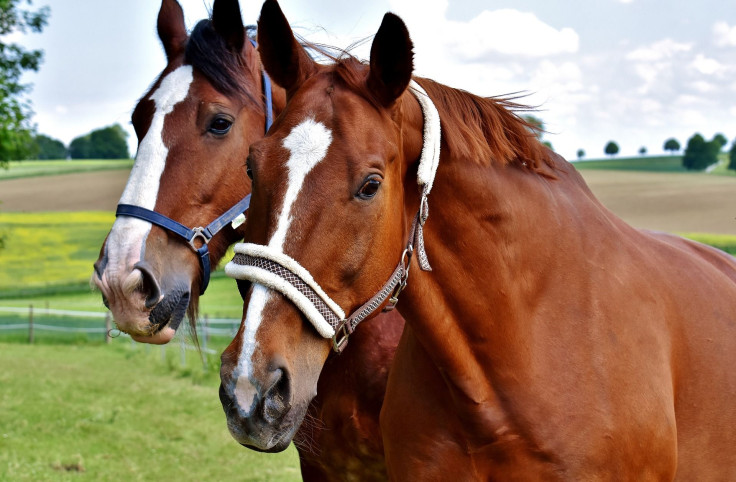'Super Horses' With Edited DNA Could Be Real By 2019

Genetically engineered horses which will be able to jump better and faster will be a reality by 2019 due to a breakthrough research work by scientists who also cloned polo horses.
According to a report by The Telegraph, scientists in Argentina made use of a strong DNA editing mechanism called Crispr to rewire the genomes of the cloned horses.
The report further stated that healthy embryos were produced after the above procedure was conducted. The researchers have planned to implant the embryos into a surrogate mother within two years.
The report then said that the group of researchers mainly focused on amplifying the myostatin gene sequence which is pivotal towards muscle development, speed, and stamina.
Theory suggests that if animals are designed in such a manner, they should be able to run faster, longer, and jump higher with relative ease.
Traditionally, the same traits would be attained by the breeding animals which already showed the desirable traits. However, the report stated that to develop a beneficial feature, it can take many generations.
Daniel Sammartino, the founder of Argentina based cloning specialist company Kheiron Biotech reportedly said: “This technology brings additional progress in horse breeding. It could be possible to achieve better horses in less time.”
“Our next big challenge is not only to export our technology but fundamentally develop these scientific advances in other animals for multiple purposes,” he added.
The report further stated that although cloning alone can’t improve a line, it still gives certain advantages to the initial donor horse. This is because the breeder can assure the fact that the environment and the training are suited perfectly to the horse’s needs which can result in the “daughter” clone being better than its predecessor.
The International Federation for Equestrian Sports (FEI) lifted the ban on cloned horses participating in international events in 2013. This was done because it was found that cloned horses didn’t hold a massive advantage over the horses which were raised in the traditional method.
However, no cloned horses competed in the Olympics as of yet, the report stated.
The FEI also stated that there were no rules in place yet which would deter a cloned horse from competing in events.
Shannon Gibbons, a spokeswoman for FEI reportedly said: “The performance of a cloned horse is unlikely to match that of the original horse for a number of reasons, including the maternal uterine environment, nutrition, training and the understanding that clones are not exactly the same as the original horse.”
“Additionally, as the progeny of cloned horses will be produced by conventional reproductive methods, such as natural covering or artificial insemination, maintaining fair play is protected,” she continued.
Gibbons added, “The FEI will therefore not forbid participation of clones or their progenies in FEI competitions. However, we will continue to monitor further scientific research.”
The DNA editing technique, Crispr stands for Clustered, Regularly Interspaced, Short Palindromic Repeat. It is a naturally occurring defense mechanism which is used by bacteria.
Bacteria carry specific genetic codes within their DNA which help it to recognize foreign agents. On recognizing the agent, the bacteria then sends out an enzyme which destroys the invader, the report stated.
Researchers used this mechanism in a bid to make “molecular scissors” which will cut out specific parts of the DNA. These parts can then be replaced by desirable parts which will give the body new instructions to follow and result in the animal getting reprogrammed.
This is not the first time Crispr was used to genetically modify animals.
According to another report by The Telegraph, the Crispr mechanism was tested in rodents in a bid to solve the growing issue of rodent infestation in the U.K.
Researchers at Edinburgh University, Scotland, said that a process which went by the name of “gene drive” could solve the problem. “Gene drive” included the spreading of infertility genes through a population of rodents which will lead to a massive collapse of their population over future generations.
This would be made possible by the DNA editing technique Crispr. The rodents would genetically engineered in the labs and will be released to mate with the native population.
Professor Bruce Whitelaw of University of Edinburgh reportedly said, “Crispr is perhaps the most exciting tool that has ever hit biology, and it is a fantastic tool for us to pull apart the function of genes and how the animal or plant functions.”
“It’s time to explore what this technology can do,” added Whitelaw.
© Copyright IBTimes 2024. All rights reserved.






















